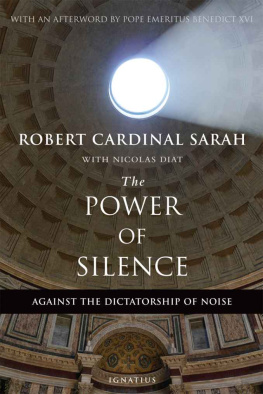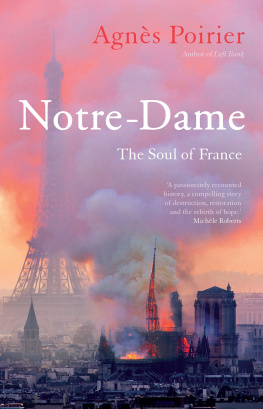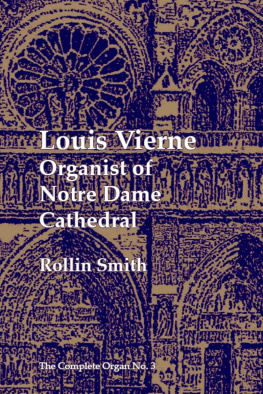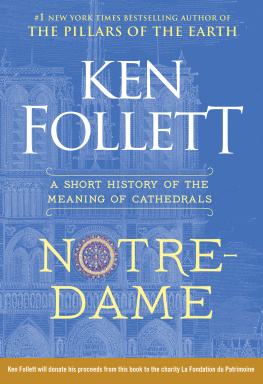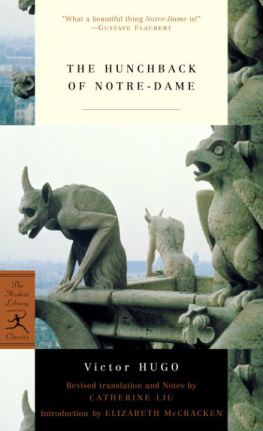A TIME TO DIE
NICOLAS DIAT
A Time to Die
Monks on the Threshold of Eternal Life
Translated by Mary Dudro
Illustrated by David le Merrer
IGNATIUS PRESS SAN FRANCISCO
Original French edition:
Un temps pour mourir:
Derniers jours de la vie des moines: recit
2018 Librairie Artheme Fayard, Paris
Cover art:
Saint Francis with a skull in his hands
c. 1630, School of Francisco de Zurbaran
Found in the collection of the State Hermitage, St. Petersburg
Heritage Image Partnership Ltd. / Alamy Stock Photo.
Cover design by John Herreid
2019 by Ignatius Press, San Francisco
All rights reserved
ISBN 978-1-62164-274-9 (PB)
ISBN 978-1-64229-083-7 (EB)
Library of Congress Catalogue number 2019931437
Printed in the United States of America
For my friend Robert Cardinal Sarah
Hie jacet pulvis, cinis et nihil .
(Here lies dust, ashes, and nothing more.)
Inscription on the tombstone of
Antonio Cardinal Barberini,
Our Lady of the Conception
of the Capuchins, Rome
We must learn how to risk fear as we risk death, true courage is to be found in this risk.
Georges Bernanos,
Dialogues of the Carmelites
CONTENTS
I A Life Cut Short
Lagrasse Abbey
II The Shadow of the Black Mountain
En-Calcat Abbey
III A Fortress Away from the World
Solesmes Abbey
IV The Smile of Brother Thophane
Sept-Fons Abbey
V Rainy Days
Cteaux Abbey
VI The Art of a Happy Death
Fontgombault Abbey
VII How to Say Goodbye
Mondaye Abbey
VIII The Deaths of the Recluses
The Grande Chartreuse Monastery
FOREWORD
A Time to Die is the title of Nicolas Diats new book. What audacious simplicity, but also what great faith to dare approach such a question that, conventionally, it is practically forbidden to discuss. But, as always, Nicolas Diat has written with great skill and depth. He leads us to the abbeys to help his readers enter into the mystery of death.
Monasteries are places where one learns to live and die in an atmosphere of silent prayer, the gaze always turned toward the beyond and the One who made us and whom we contemplatebecause from my flesh I shall see God (Job 19:26). All those who pray consider life, the world, and death with confidence and emotion, and, at every moment, discern the presence of God within them. It is certain the monks, too, are familiar with the difficult and tragic reality of death. They experience the anguish, the fear at the approach of the 6:00 A.M. bus that disappears into the darkness. But, in these elevated places of prayer, since the Resurrection of Christ, death is an Easter, a passage. We lay aside the bodily exterior with which we could not move into the divine atmosphere. Those who leave us, like Brother Vincent-Marie de la Resurrection, at the abbey of Lagrasse, Father Dominique, at En-Calcat, Brother Buisson, at Solesmes, Father Jol, at Mondaye, and the magnificent hermits of the Grande Chartreuse, Dom Landuin, Brother Jean, Dom Gabriel, Dom Andre Poisson, continue to live, to know, to love, without being limited by the fragility of their bodies or hindered by the shackles of sin. Their death is a passage into a life that man has prepared here below and that God continues without end. Death places us in the infinity and depths of God.
In reading A Time to Die , we better understand that death is the most important act of earthly existence. All life is made to explode, to go farther, to merge with Life, with God.
I am infinitely thankful to Nicolas Diat for having brought us for a moment before the mystery of death, and I recommend to all the reading of this wonderful book.
Robert Cardinal Sarah
Prefect of the Congregation for Divine Worship and the Discipline of the Sacraments
EXTRAORDINARY STORIES
Vanity of vanities, says the Preacher, vanity of vanities! All is vanity.... For everything there is a season, and a time for every matter under heaven: a time to be born, and a time to die; a time to plant, and a time to pluck up what is planted... All go to one place; all are from the dust, and all turn to dust again.
Ecclesiastes 1:2; 3:1-2, 20
In Rome, at the foot of the Via Veneto, behind the Fountain of the Bees, the crypt of the Capuchin church presents a strange sight. From floor to ceiling, five chapels are ornamented with the bones of monks from ages past. At the entrance, a somber wooden placard warns visitors: We were like you; you will be like us.
Embalmed monks, fixed in perpetual stillness, re-clothed in their habits, imitate postures of prayer. Fibulas, tibias, hu-meri, and femurs decorate the walls and arches. Piles of bones, heaps of skulls, vertebrae, and ribs that give form to the most sophisticated creations now compose a surrealist reverie.
The greatest hoax of the Capuchins is that they impose the adoration of their dead victims upon the living. In La Reine Albemarle ou le dernier touriste (Queen Albemarle or the last tourist), the story of a trip to Italy, Jean-Paul Sartre thus mocks the delirium of these religious.
These macabre ornaments intensify sorrowful passions. They betray a disordered relationship with death. One would like to believe that this is merely a parody or carnival pantomime. When one leaves the crypts to return to life, the din of Roman traffic reveals charms we never noticed before.
This baroque exultation is the perfect antithesis to the denial of death that pervades our present times. Modern man has an obsessive fear. He does not want to admit that life has an end. He searches by every means to forget the Grim Reaper. Death is disguised with makeup, like a hated and nightmarish reality. God is dead, and so is death. The Homo deus runs like a madman who seeks to catch the flag of immortality by force.
Alas, it is enough to enter a funeral home one day, where undertakers reign supreme, in order to perceive the success of this utopic vision. A new extreme was reached when a novel funeral practice arrived from the United Sates: the liquefaction of bodies through alkaline hydrolysis. The prophecy of Aldous Huxleys Brave New World is upon us.
In 1995, Franois Mitterrand wrote the remarkable preface for Marie de Hennezels La Mort intime (Intimate death). Tired and ill, the president of the Republic was himself at the end of lifes path. Never before, perhaps, has the relationship to death been so impoverished as in this time of spiritual desolation when men, in their rush to exist, seem to avoid all mystery, he lamented. Raised in Jarnac, he loved the countryside world where men died in their homes. Family, friends, neighbors came to keep vigil over the body of the deceased. Often, the departed extraordinary stories 13 reposed in the same bed where he had rested during life. The family themselves took care of the body. The shutters of the bedroom were closed. After the funeral Mass, the casket traveled through the village to the cemetery. For many months, the family would dress in black as a sign of mourning.
Since that not-so-long-ago era, the West has worked hard to bury death more deeply in the vaults of its history.
Today, the liturgy of death no longer exits. Yet fear and anxiety have never been as strong. Men no longer know how to die.
In this desolate world, I had the idea to take the path of the great monasteries in order to discover what the monks might have to teach us about death. Behind cloister walls, they pass their existence in prayer and reflection on the last things. I thought their testimonies could help people understand suffering, sickness, pain, and the final moments of life. They have known complicated deaths, quick deaths, simple deaths. They have confronted death more often, and more intimately, than most who live outside monastery walls. I had an intuition, when I began this work, that the monks would not hide anything from me, that they would tell me truthfully about the death of their members. The accounts collected in the abbeys I visited did not disappoint me.
Next page

